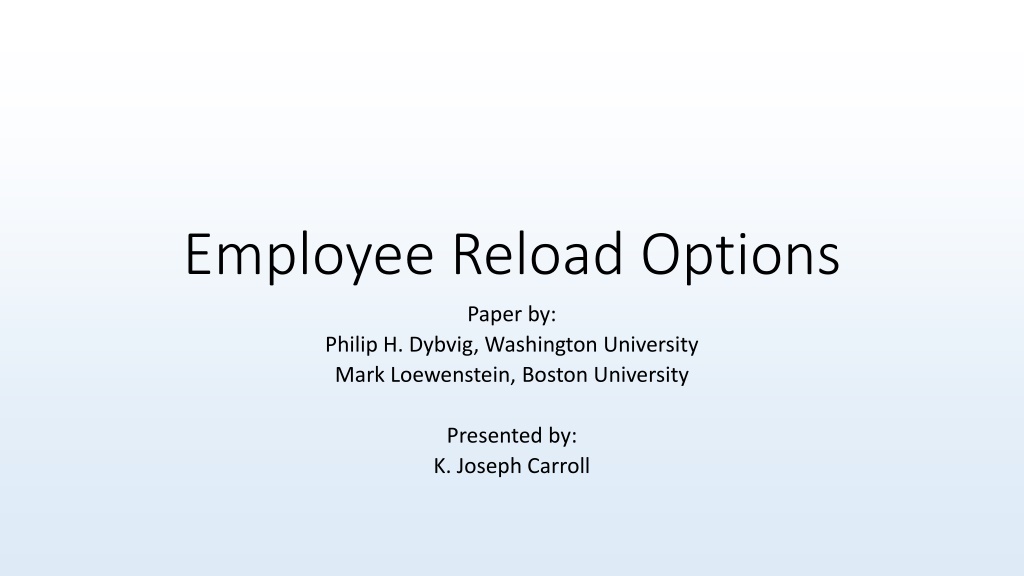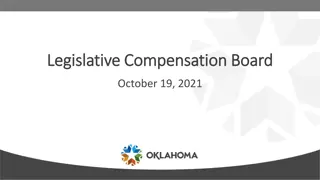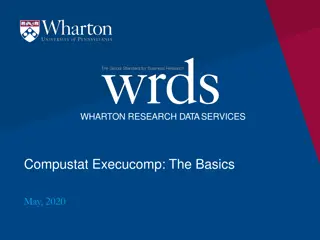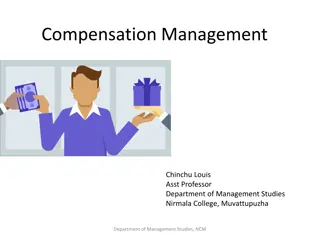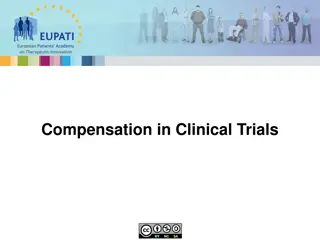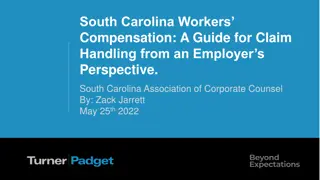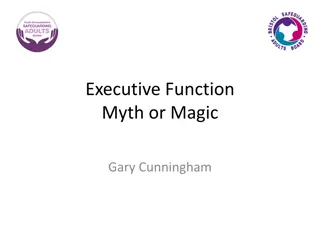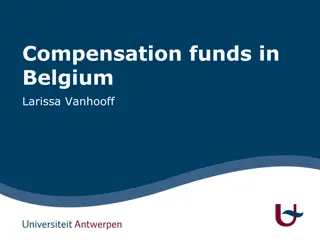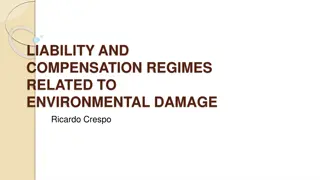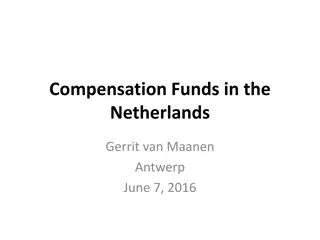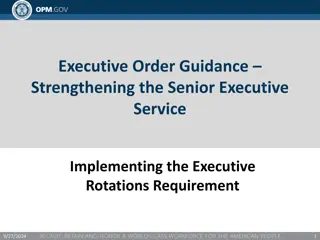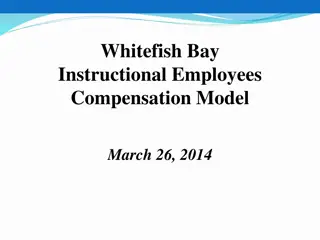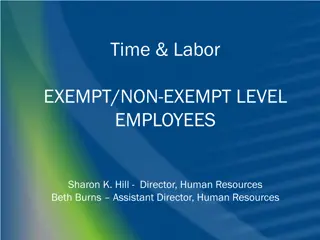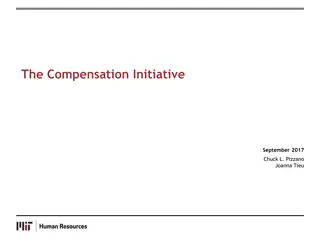Understanding Employee Reload Options in Executive Compensation
Explore the concept of reload options, a type of exotic derivative used in executive compensation. Learn how reload options work, their basic process, examples, variations, and the background surrounding their creation and controversy. Understand the implications on executive incentives and company control.
Download Presentation

Please find below an Image/Link to download the presentation.
The content on the website is provided AS IS for your information and personal use only. It may not be sold, licensed, or shared on other websites without obtaining consent from the author. Download presentation by click this link. If you encounter any issues during the download, it is possible that the publisher has removed the file from their server.
E N D
Presentation Transcript
Employee Reload Options Paper by: Philip H. Dybvig, Washington University Mark Loewenstein, Boston University Presented by: K. Joseph Carroll
Content 1. What Is A Reload Option? 2. Background 3. Assumptions and Set Up 4. The Model 5. Discrete Exercise 6. Continuous Exercise 7. Black Scholes and Dividends 8. Time Vesting 9. Conclusion and Opinion
1. What Is A Reload Option? An exotic derivative Essentially an American call option with a bonus for the holder Popular use in executive compensation Performance incentive, promotes executive ownership of the company
Basic Reload Process For every share tendered to pay the strike, the holder receives a reload option Holder pays strike price with previously owned shares For every option exercised, the holder receives one new share Holder excercises the options before maturity date
Reload Option Example Bob owns 100 reload options with strike K = $100, A $10,000 gross strike. Bob exercises his options before maturity at S = $125. Bob must pay the $10,000 strike price with K/S = 80 shares. (80x$125=$10,000) Every exercise grants a new share. Bob s exercise grants him 100 new shares - 80 (pre-existing) tendered for strike price = 20 new shares of stock with market value $125*20=$2,500. Bob is also granted 80 new options (one for each share tendered for K) with new strike $125 and same maturity as the original options. This is the reload.
Variations and Conventions of Reloads Most common: unlimited, uninhibited reloads Some plans have unlimited reloads but with six month waiting period between exercises Variations on amount of reloads Some plans issue enough reloads to cover tax on strike price Some plans issue reloads to replace ALL options exercised We focus on unlimited, uninhibited reloads with one reload per share tendered as with Bob.
2. Background Reload options are relatively young, created in 1987 Controversy has surrounded reload options from ignorance: Ability to exercise again and again is a money pump Companies lose control of number of shares issued Reloads create bad incentives for executives to take big risks to compensate However: 1. value of the reload option is bounded above and below by stock price and American call price 2. The net number of new shares issued is bounded by the initial count of reload options 3. The incentives from reloads are not much different than that of a European call
Reload vs. Euro Call Although Reloads are more valuable, the curve is very similar to a European call under BS assumptions (Further out of money = more valuable) Similar incentive effects to a typical option; reloads aren t so dangerous after all?
3. Assumptions and Set Up 1. Employee can retain new shares from exercise 2. Employee either owns or can borrow enough shares to pay the exercise price 3. Stock price and compensation are unaffected by exercise 4. No transaction cost or taxes 5. Non-negative dividend payments, stock strictly positive, prefer consumption The value of a reload option conveniently bounded: Bounded above by the stock price Bounded below by the corresponding American call
4. The Model Two primitive assets the bond locally riskless the stock risky asset S(t), the risky asset, may pay dividends and thus can only jump down alpha(t)=number bonds held, B(t) = bond process, theta(t) = number stocks held, S(t) = stock process, C(t) = cash flow, D(t) > 0 = cumulative dividend per share. W(t) is the nonnegative wealth process
5. The Discrete Exercise of The Option Assumption in this case: The holder has enough shares to pay the initial price, can retain the shares on exercise Payoff at time t<=T is 1-K/S(t) shares, plus K/S(t) reload options In this framework, we assume there are discrete times where exercise is available.
Multiple Exercises First exercise: shares and reload options with strike Second exercise: share, and in total share and reload options General form: shares and reload options.
Theorem 1 It is optimal to exercise the reload option whenever it is in the money, and not when it is out of the money. Exercise process: or the maximum of the strike and the highest stock price in the life of the option
6. Valuation of Reload Options, Continuous Exercise Black Scholes Derivation ->
7. Black Scholes Case With/Without Dividends A share grant and a European call option Value comparison of Euro Call to Reload with no dividends (Left) and with Dividends (Right). Note the larger gap
Similarities to Standard Calls In Black-Scholes, like the American call, a reload option s value is: Decreasing in strike Increasing in stock price Increasing in maturity Decreasing in dividend rate Increasing with volatility/risk
8. Time Vesting Exercise is most attractive at later dates when there is a multiple of the vesting period (typically 6 mo) left in the option s life, thus early Exercise boundary is flatter
9. Conclusion/Opinion It is very important to understand the true valuation of exotic derivatives Executive compensation is heavily reliant on stock options Anger and skepticism on exotic derivatives, especially some executive options, can be lessened by identifying boundaries, valuation, and by comparing to other more accepted derivatives Things get much more complicated when we consider taxes and transaction costs
